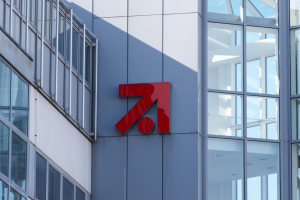
After more than 40 years of operation, DTVE is closing its doors and our website will no longer be updated daily. Thank you for all of your support.
ProSiebenSat.1 and Discovery: broadcasters team up for OTT TV
 This week saw German broadcaster ProSiebenSat.1 team up with the mighty Discovery to launch a new OTT TV platform for Germany.
This week saw German broadcaster ProSiebenSat.1 team up with the mighty Discovery to launch a new OTT TV platform for Germany.
The service, to be launched in the first half of next year, will incorporate ProSiebenSat.1’s 7TV and Maxdome services, Eurosport Player and a range of other content. The pair are however opening the platform plan up to the possible inclusion of rival broadcasters including RTL as well as public broadcasters ARD and ZDF.
The alliance between Discovery and ProSiebenSat.1 builds on an existing free-to-view venture, 7TV, that the pair teamed up to create last year
The idea of a national streaming platform open to all broadcasters is very much in vogue currently. Earlier this month, France’s main broadcast groups cooked up a similar plan – though without the participation of a pay TV giant like Discovery. The joint project, to be developed by France Télévisions, TF1 and under the Salto brand that has been around for a few years, will offer access to catch-up and current content as well as a subscription video-on-demand service without a contract commitment.
In Spain, RTVE, Mediaset España and Atresmedia teamed up in May to develop a joint HbbTV platform with plans to create an OTT TV service further down the line.
In the UK meanwhile there has been much discussion around the creation of ‘Kangaroo 2’, a joint platform that references an earlier project that was blocked on anticompetitive grounds in a very different media environment.
The German plan does not yet include an agreement between the main national broadcast players, as those in France and Spain do. ProSiebenSat.1’s deputy CEO Conrad Albert told ANGA COM executives earlier this month that a joint OTT TV platform made sense.
““It is not easy to open up our own OTT platform to competitors but I think it could be to the benefit of all,” he said, earning a riposte from cable operator Unitymedia’s CEO Lutz Schuler that a lot of time had already been lost, enabling the likes of Netflix and Amazon to gain a much stronger foothold in the German streaming market.
ProSiebenSat.1’s existing SVOD platform Maxdome has around a million subscribers, compared with an estimated 2.6 million for Netflix and 3.3 million for Amazon. Whether the new venture can close the gap is open to debate. The pair’s target of 10 million subscribers seems ambitious, particularly in a market that is slow to embrace premium services generally. The inclusion of Eurosport Player, with its Bundesliga football rights, could boost take-up if the price is right. However, it’s worth noting that both Discovery Channel and Eurosport Player are already present on the Amazon Channels service.
This is illustrative of a wider point. For all the talk about creating national or even pan-European platforms that can take on the might of Netflix, pay TV broadcasters like Discovery are likely to hedge their bets, forging alliances of convenience as part of a multi-pronged strategy.
For national players such as ProSiebenSat.1, the stakes are arguably higher. They see younger viewers increasingly consuming video online rather than via broadcast and no that they are in a battle to defend their established business models. Regulators are now actively encouraging them to collaborate – a significant change from the fate of such projects in the pre-Netflix age.
Unlike national broadcasters, Netflix and Amazon can exploit original content rights across multiple territories within their own platform. The same is true to some extent of an emerging global player such as a combined Disney-21st Century Fox (or Comcast-21st Century Fox) as well as Discovery itself.
National broadcasters on the other hand are restricted to their own particular territory for the most part. They also face growing competition not only from internet-based players but from telecom operators and other pay TV platforms that are pouring cash into original series. Meanwhile, inflation in content production costs means that they are turning to the likes of Netflix or Amazon to co-produce high-end drama and other content.
After years of false starts, national broadcasters are now racing to create joint platforms, this time with the support of regulators. They still have an often under-appreciated asset in the shape of national reach for their still-popular broadcast services. It is to be hoped that they can transfer that legacy to the online world as the shift in consumption starts to accelerate.

